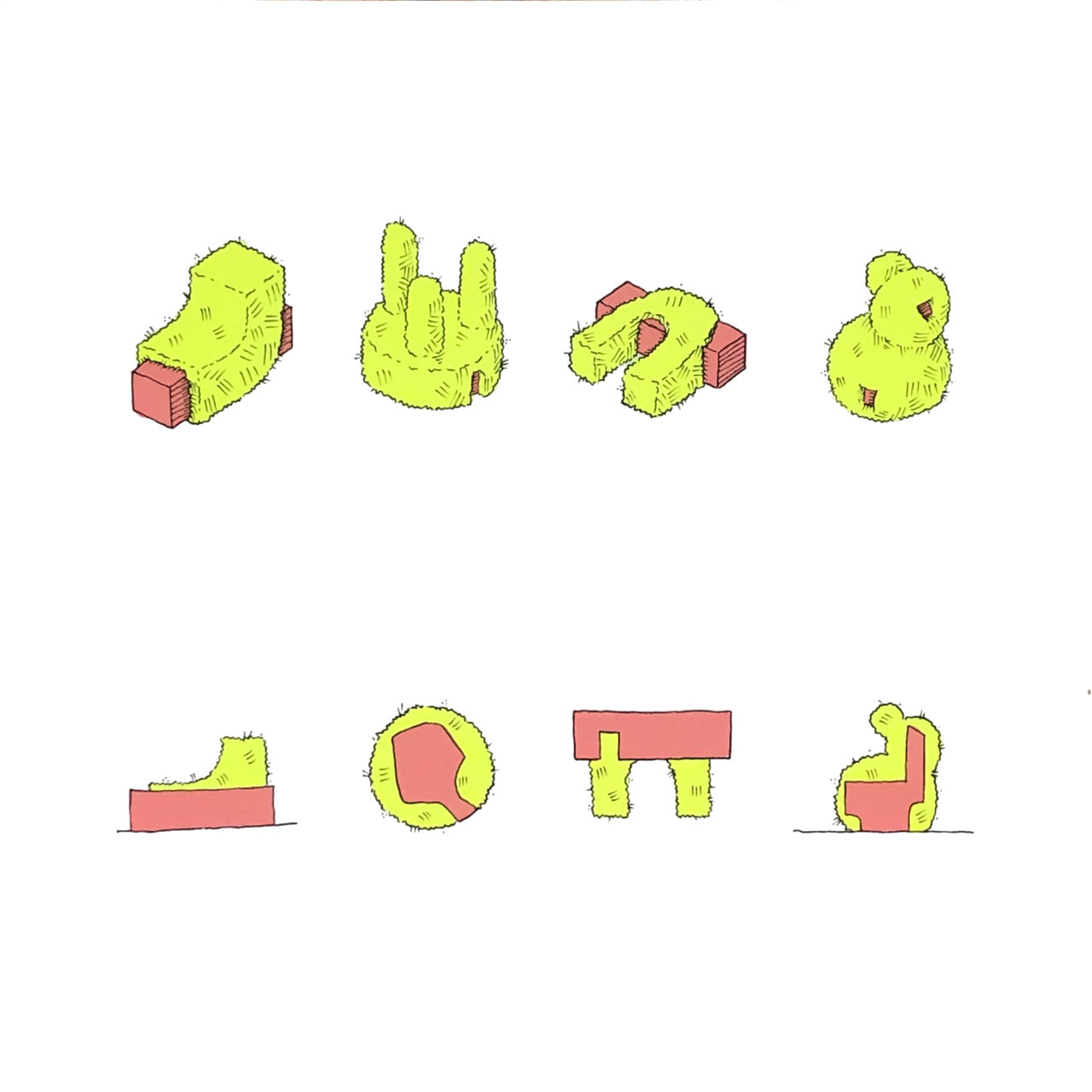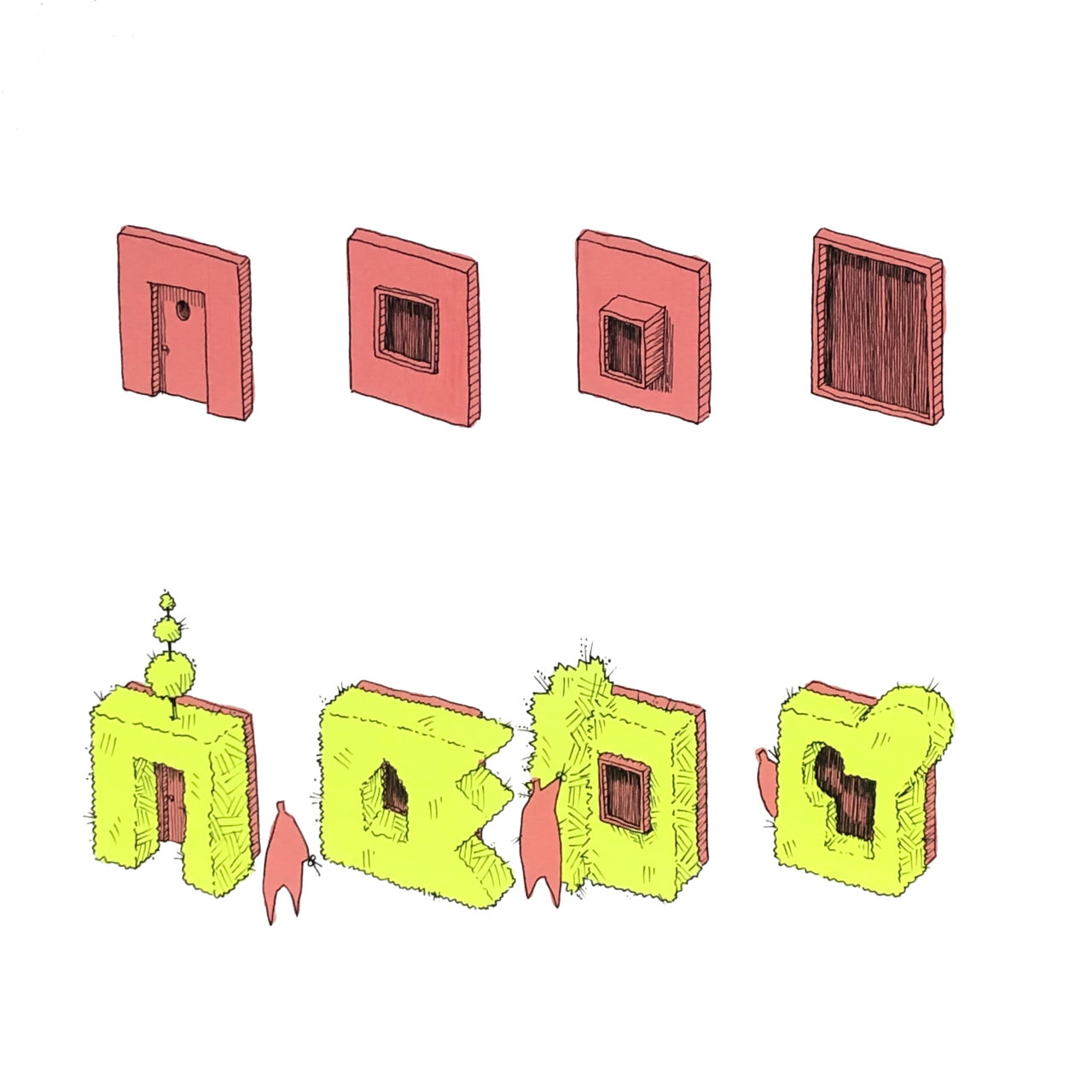Table of Contents
- Introduction
Most Plants Can Become Topiary, But Some Are Better Than Others
History: It All Began with the Romans...
Topiary Tango Tells Tales
Topiaries Mask Volumes
Which Limbers Up Architecture
Topiary Architecture Has Design Implications
Take These Two, for Example
Installation Views
Topiary Architecture Has Design Implications
Topiary can add mass to architecture. Snub-nosed structures can be stretched, uneven edifices can be symmetrized, and bumpy buildings can be burnished. The nested architecture no longer needs a tight wrapper. Visual unpleasantries such as broken datum, protruding extremities, and dissonant proportions can be obscured by bushes. Topiary’s volume can be added to architecture to correct and harmonize unsightly conditions.

Massing (top): Topiary can add mass to architecture. Snub-nosed structures can be stretched, uneven edifices can be symmetrized, and bumpy buildings can be burnished. The nested architecture no longer needs a tight wrapper. Visual unpleasantries such as
broken datum, protruding extremities, and dissonant proportions can be obscured
by bushes. Topiary’s volume can be added to architecture to correct and harmonize unsightly conditions.
Program (bottom): Both topiary and hard architecture are capable of defining space. The building’s programmatic duty is shared by the two space-makers. In the context of a house, the internal architecture takes responsibility for more sensitive activities such as
kitchens, bedrooms, and bathrooms, while topiary can organize flexible programs including foyers, living rooms, and dining rooms. Programs can flow between the two, extending hard spaces into soft ones when the weather permits.

Interior Space (top): The interior space and exterior form are no longer correlated. Topiary can add thickness wherever desired. Exterior repercussions from interior design decisions can be disregarded and masked with topiary.
The architecture can be conceived as a spatial experience from the inside, and later post-rationalized into a single coherent object. The building can be about space and about object.
Exterior Space (bottom): Hedges can define and enclose outdoor spaces, whether as waist-high obstacles or extravagant arbor courtyards. A project’s spatial control can extend beyond the front
door, blurring the line between architecture and site. Topiary becomes as much a part of the building as the walls that keep the elements out.

Doors & Windows (top): Doors and windows are permanent architectural features that break through the topiary envelope. They must be designed to anticipate interaction with the foliage. Topiary can adjust the profiles of traditional doors and windows, arching
rectangles, or subdividing landscape views. Extruded windows bypass the topiary poche and remain visible. Curtain walls allow windows of any shape or size to be organized on the façade.
Agency (bottom): Anyone with shears has the agency to change topiary architecture. Tired of the sharp corners? Let them grow out. Want more privacy? Plant some privets.
Topiary grants a single building countless enclosures. Any face has the potential to become the main attraction or to be left
as back-of-house. While it’s impossible to conceive of every wrapping possibility, the interior can give opportunities for reinterpretation through massing and aperture placements. The less complete the hard architecture is, the more potential there is for a successful topiary building.